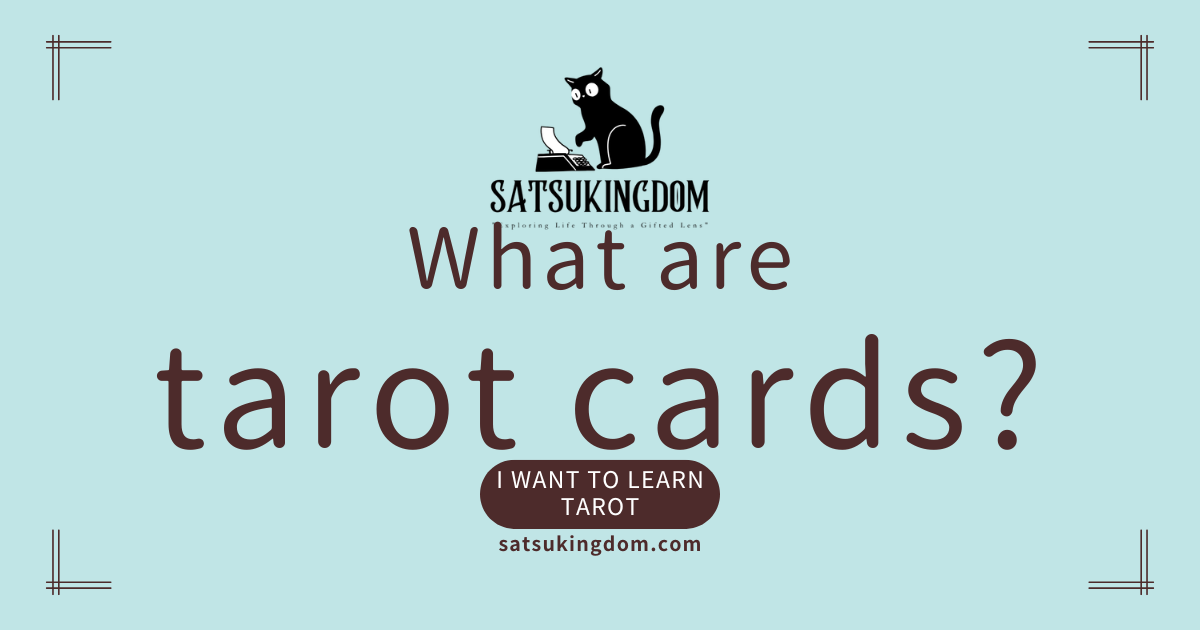This time, we’ll be discussing the types of tarot cards.
Types of Tarot Card Decks
Tarot cards have a long history. Over the years, they seem to have branched out into various patterns. I’ll briefly touch on that card set (deck).
- Tarot de Marseille
Originating in 16th-century France. One of the oldest traditional tarot decks. The Major Arcana designs are simple and rustic. The Minor Arcana feature only numbers and suit symbols, lacking illustrations and resembling numbered cards. Recommended for those seeking to learn its history and traditional interpretations, or who value tradition. - Rider-Waite Tarot
Born in England in 1909. Based on the symbolism of the Golden Dawn (a mystical society). The Minor Arcana also feature illustrations, incorporating elements of astrology and Kabbalah. Positioned as the global standard for tarot, it offers abundant information and is beginner-friendly. - Thoth Tarot
A deck strongly reflecting Kabbalah, astrology, and mystical thought. Its unique colors and shapes give it high artistic value. While its complex symbolism makes it challenging, it suits those who prioritize the spiritual realm and the depths of the psyche. - Traditional Style
Decks primarily modeled after neutral European card designs. This includes the Marseille version and similar designs. - Modern/Art Tarot
Original designs created by contemporary artists and creators. Features strong thematic elements like animal tarot, Japanese-style tarot, and fantasy themes. Enjoyable for its artistic worldview, recommended for those who want to use cards intuitively based on their own sensibilities. - Oracle Cards (Extra)
Similar to tarot cards, these are cards used in order to receive messages and advice for oneself or others. The number of cards and their meanings are at the creator’s discretion, and they do not incorporate astrology or Kabbalah systems. They have fewer rules than tarot and emphasize intuition.
The most common types seem to be those listed above. Oracle cards are used slightly differently, but since they are often used together, they are included as a special feature.
What I chose was
As a beginner, I purchased the Rider-Waite deck because it has the most information. Once I get more comfortable, I’d like to try other types too. It seems like as you keep practicing, you’ll find the cards that suit you best. Modern and art-style tarot decks are often enjoyable just to look at the artwork. I hear some people collect decks even if they don’t read them, so someday I’d love to try reading with such a deck.
Tarot Card Structure
From here on, I’ll be discussing the Rider-Waite version. While the basic structure is the same, I hear there are slight rule variations across different decks. Over its long history, it must have branched out in various ways. If we’re talking about children’s games, it’s like regional variations, I suppose.
The tarot deck consists of 78 cards.
And broadly speaking, they are divided into:
- Major Arcana: 22 cards
These cards are said to symbolize major themes and fateful currents in life. When they appear in a reading, it suggests something essential or a turning point is involved. I perceive these cards as having strong energy. I recognize them as influential cards. - Minor Arcana: 56 Cards
These cards express a more detailed world compared to the Major Arcana. They symbolize specific events and emotional movements occurring in daily life. I don’t feel the energy of these cards as strongly, so I struggle with readings using them. However, compared to readings using only the Major Arcana, the Minor Arcana seem to represent aspects closer to actual experiences, giving the reading content a sense of depth.
Tarot reading involves interpreting these two types of cards, totaling 78 cards, together.
What is the Arcana?
Incidentally, the word “Arcana” is originally the plural form of the Latin word “arcanum,” meaning ‘secret’ or “hidden thing.” It began being used in relation to tarot cards around the 19th century.
It is speculated that this connection arose because the imagery depicted on tarot cards was believed to symbolically express “secrets”—profound truths about life, destiny, and cosmic laws—that cannot be easily grasped by human reason.
In light of that,
- Major Arcana
Represents the “great secrets” dealing with major life events, spiritual growth, and universal themes. - Minor Arcana
Represents the “small secrets” depicting specific daily occurrences, emotions, and familiar problems.
The use of the term “Arcana” may indicate that tarot cards were considered not merely a deck of cards, but something embodying profound wisdom and mystery.



コメント